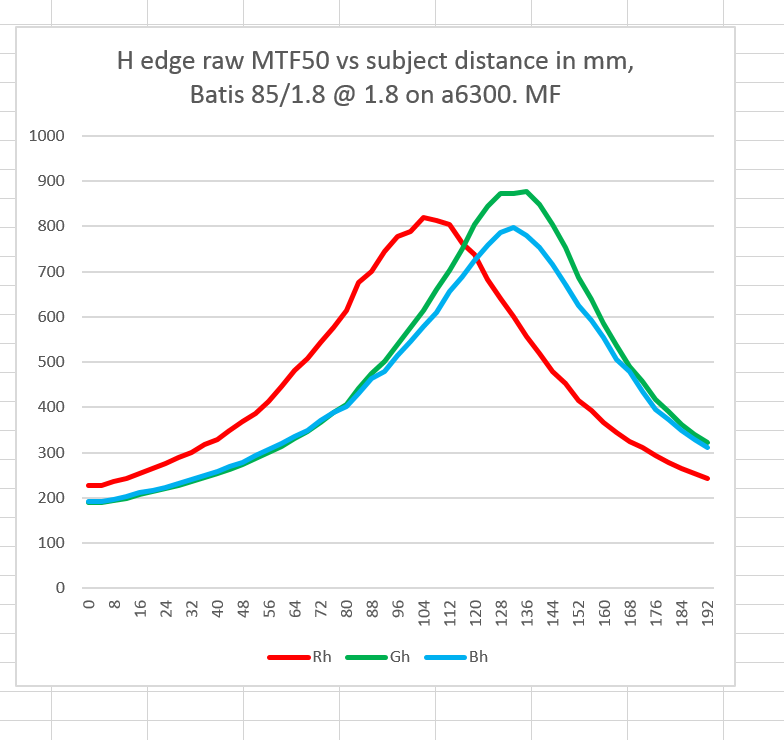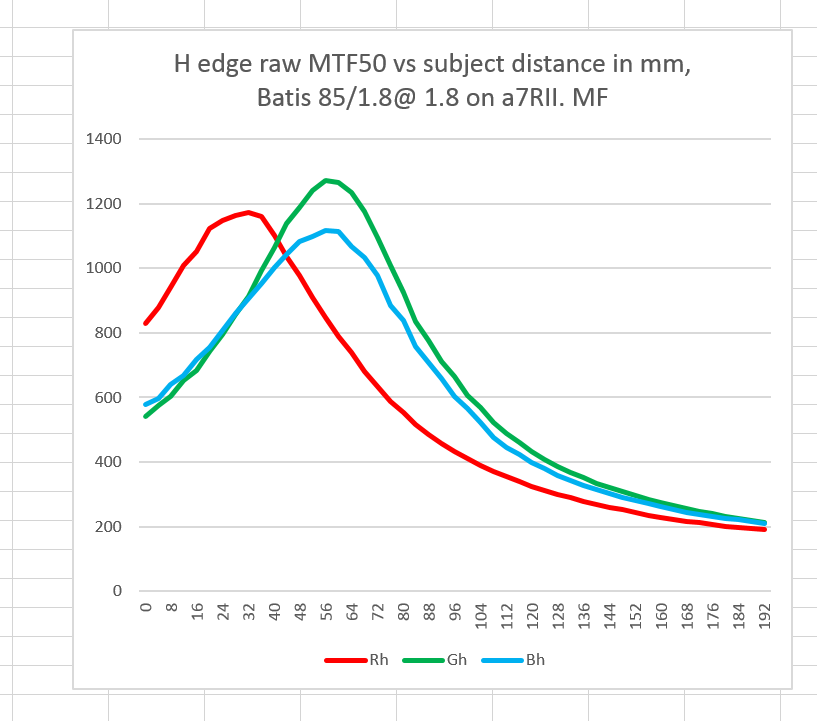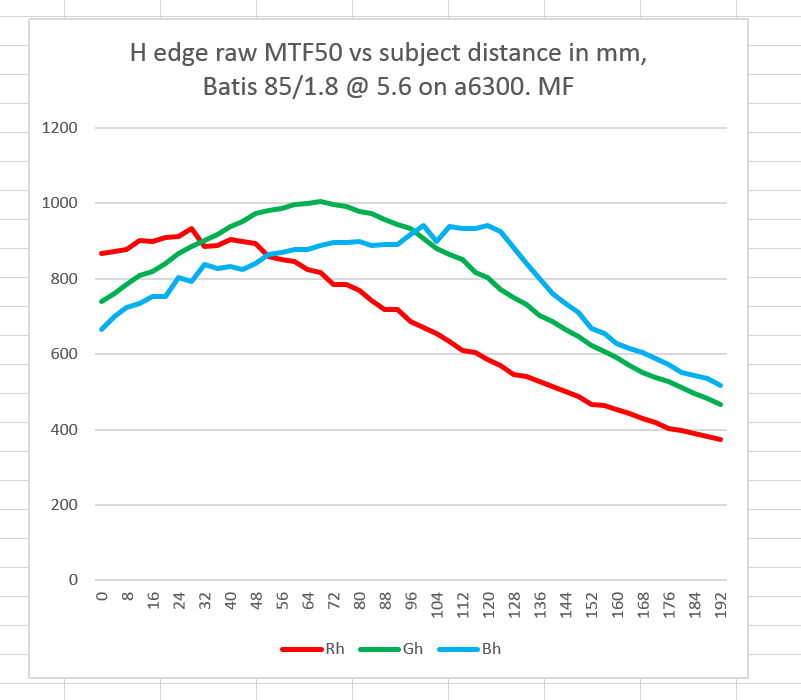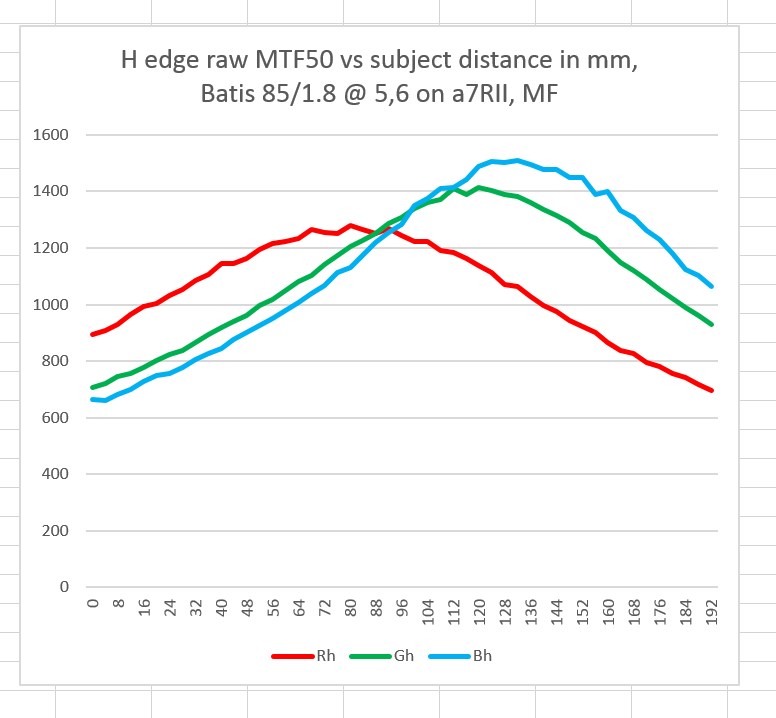This is part of a long series of posts about the Sony a6300. The series starts here.
You’re probably not gonna use your Otus 85 on an a6300, so sharpness comparisons between the two cameras probably aren’t of much practical use. But you might use your Batis on the a6300. How much sharpness do you give away by going to an APS-C camera? I’m not presenting the results for the sharpest f-stops of the lens, but I happen to have f/1.8 and f/5.6 results for the a6300 from the last post, and I can go back and dredge up ones for the a7RII.
At f/1.8:
Ignore the horizontal axis. Just look at how high the peaks are. The green peak for the a7RII is at about 1275 cycles.picture height, and the peak for the a6300 is at a little under 900 cy/ph.
At f/5.6:
The green channel peaks at 1000 cy/ph for the a6300, and 1400 cy/ph for the a7RII.
In this little contest, the a7RII has two things going for it. It has more pixels top to bottom, and it has a greater dimension top to bottom. The latter lets it take advantage of more of the lens’ field, and the former let’s it sample what the lens can deliver more finely.
Note that the a6300 results, while definitely a step down from the a7RII ones, are by no means bad.




Hi Jim,
As always, I appreciate all the efforts which you put in for doing these great experiments.
I am very interested in seeing the comparison of the same lenses on the A6300 vs the A7II. Both cameras being same resolution and that they are APS-C vs Full Frame would let me know how much going Full Frame is going to benefit the sharpness of the images from the same lenses even though the FoV will not be the same.
Best Regards
JM
Thanks for repeating this test on a different camera. I think it would be a great idea to report your findings to Zeiss. I’m not sure how accessible they are to customer feedback but your analysis seems rigorous enough that they should least consider looking at the data.
Jim,
I guess this is the expected result if the lens out resolves the 6300 sensor in the middle of the frame. However, it would be interesting to look at resolution near the edge of the frame with the two cameras at appropriate distances to have the target equally sized, as a % of the image. In other words, with equal fields of view – which means the 6300 would have to be further from the target.
I’m wondering how much the higher resolution of the A7ii compensates for the fall-off in image quality at the edges of the image circle. In contrast, the edges of the APS-C sensor are likely in a better performing part of the Batis image circle and, therefore, might provide a higher effective resolution even though the overall image has fewer pixels.
Does that make sense? Bigger sensor is good, but it means you have to make a lens that performs over a larger image circle. There is always some kind of trade-off, yes?
Michael
Excellent Jim. When looking at MTF comparisons on a per picture height basis, if everything else is the same the only thing that matters is the number of pixels in the height of the sensors. Based on the a7RII’s excellent results with the same lens one would therefore expect the a6300’s f/5.6 green channel to peak at 1400*4000/5320 = 1056 cy/ph. The a6300 falls about 5% short of that. Lots of reasons why that could be (remember the animation). Is the a6300’s sensor BSI?
Jack